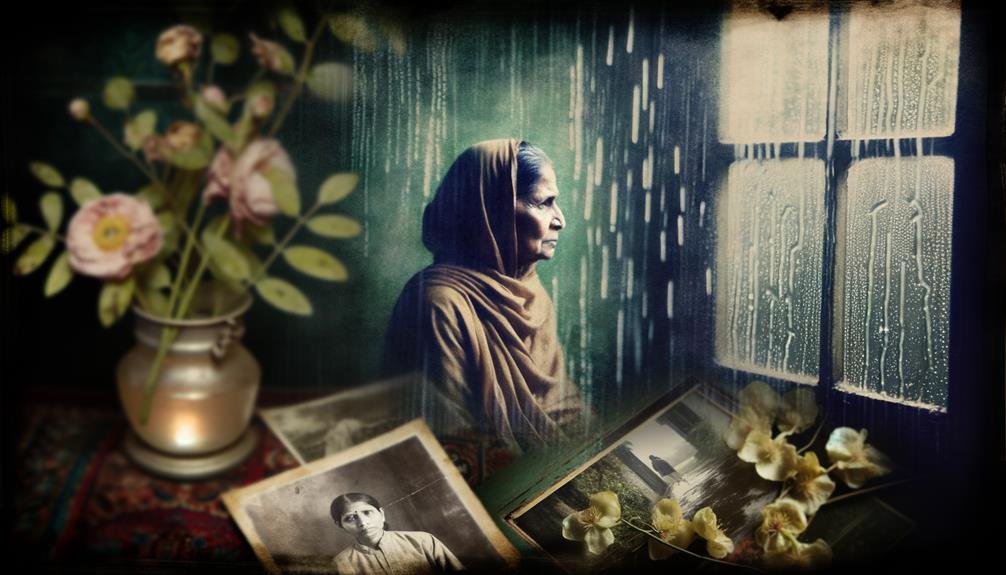You might find yourself mourning someone who’s still alive, facing the unsettling emotions of ambiguous loss. It’s a unique kind of grief, tangled with love and confusion, where the person is physically present but emotionally distant. This type of mourning lacks closure, leaving you in a limbo of unresolved feelings. You might wonder how to navigate this emotional maze without the societal understanding that typically accompanies the loss of a loved one. How do you cope with a grief that’s invisible to others, yet deeply real to you? Let’s explore the nuances of this challenging experience.
Understanding Ambiguous Loss
Ambiguity can often complicate the grieving process, especially when you’re grieving someone who is still alive. You might experience ambiguous feelings, a mix of love, loss, and confusion, making it difficult to find closure. This type of loss is unique, leaving you with unresolved emotions that linger without the finality of death.
It’s important to recognize that complex grief like this is often misunderstood by others, who may not grasp the depth of your pain. You’re navigating an emotional landscape where the person you mourn is physically present but emotionally or mentally absent.
Common Causes of Living Grief
In many cases, living grief stems from significant life changes that alter relationships with those you care about. When someone experiences unresolved trauma, it can create a rift, leaving you feeling disconnected from the person they used to be. This can be especially challenging when you remember the closeness you once shared.
Complicated relationships add another layer to living grief, as they often come with a mix of emotions—love, frustration, and sadness. You’re left navigating a maze of feelings, trying to make sense of the changes. It’s important to acknowledge that these situations aren’t easy, and it’s okay to feel overwhelmed.
Emotional Impact and Symptoms
Grief isn’t just reserved for death; it’s a complex emotion that can arise when you’re dealing with the living loss of someone you care about. This unique grieving process can weigh heavily on your heart, leaving you feeling emotionally drained.
You might find yourself oscillating between sadness and anger, or even feeling guilty for mourning someone who’s still present in your life. These psychological effects can manifest as anxiety, depression, or confusion, making it difficult to navigate daily life.
It’s important to recognize these symptoms and understand that what you’re experiencing is valid. Allow yourself the space to feel and heal; reaching out for support can be a crucial step in managing the emotional impact of such profound loss.
Societal Misconceptions and Challenges
Many people don’t understand that grief isn’t only associated with death, and this oversight can lead to societal misconceptions that complicate the grieving process.
You might feel isolated when others don’t acknowledge your grief for someone still alive. There’s often a lack of stigma awareness, which makes it hard for you to share your experiences without fear of judgment.
These misconceptions challenge your emotional journey, making it crucial to foster community education. By raising awareness, you help others understand that your mourning is valid.
Seek out support resources, like counseling or support groups, that can guide you through this experience. Remember, you’re not alone, and building empathy within your community can pave the way for acceptance and understanding.
Coping Strategies and Support
When you’re faced with mourning someone still alive, finding ways to cope can feel overwhelming. You’re not alone in this journey, and various therapeutic techniques can provide relief. Consider exploring online resources that offer guidance, from forums to virtual support groups.
Engaging in self-care is crucial; it’s okay to prioritize your own needs. Whether it’s journaling, meditating, or simply taking a walk, these activities can help you process emotions.
Connecting with others through community outreach can also be incredibly comforting. Sharing your experiences with people who understand can ease the burden.
Finding Meaning and Healing
Sometimes, it helps to seek out meaning and healing amid the complex emotions of mourning someone who’s still alive. Acknowledging your feelings is the first step in the healing process. You might feel a whirlwind of emotions, but understanding them can guide you toward acceptance.
Reflect on the relationship and cherish the positive memories. This can create a sense of peace, even when closure seems elusive. Reach out to others who understand your journey; shared experiences can be profoundly healing.
Consider journaling or creative outlets to express your thoughts. These practices can offer clarity and a path to finding closure. Remember, healing isn’t linear, and it’s okay to seek professional guidance. You’re not alone on this journey.
Conclusion
Imagine you’re holding a book with missing pages; you can’t fully understand the story, yet you can’t stop reading. Mourning someone still alive feels like this—confusing, frustrating, but deeply human. You aren’t alone in navigating this emotional maze. Studies show that over 30% of people experience ambiguous loss at some point, highlighting the need for empathy and support. Embrace your feelings, seek guidance, and remember: healing is a journey, not a destination. You’re doing your best.

